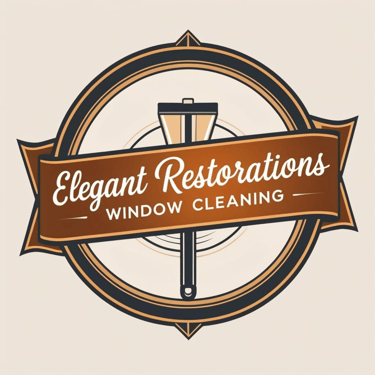Soft Washing vs. Pressure Washing: Which is Preferred for Your House?
Discover the best cleaning solution for your home with our expert comparison of soft washing and pressure washing. Learn which method is safer, more effective, and ideal for preserving the integrity and elegance of your house's exterior. Get professional insights on the preferred techniques for different surfaces and make an informed decision to enhance your home's curb appeal.
Alex Flores
5/25/20244 min read
Understanding Soft Washing and Pressure Washing
Soft washing and pressure washing are two distinct cleaning methods employed to maintain the exterior of residential properties, each with unique mechanisms and applications. Soft washing is a cleaning technique that utilizes low-pressure water combined with specialized cleaning solutions to effectively eliminate biological elements such as mold, algae, and mildew. The low-pressure application ensures that the cleaning process is gentle on delicate materials and surfaces, making it an ideal choice for roofs, painted surfaces, and older homes with fragile siding. The cleaning solutions used in soft washing are designed to break down biological contaminants at their source, ensuring a thorough and long-lasting clean while preserving the integrity of sensitive surfaces.
In contrast, pressure washing involves the use of high-pressure water to remove dirt, grime, and stubborn stains from various surfaces. This method is particularly effective for hard surfaces like driveways, concrete patios, and brickwork, where the high-pressure water can dislodge and wash away accumulated debris. However, the aggressive nature of pressure washing can be detrimental to more delicate parts of a house, potentially causing damage to materials such as wood, vinyl siding, and older structures. The key to successful pressure washing lies in the operator's ability to control the water pressure and angle, ensuring that the cleaning is both effective and safe.
The primary difference between soft washing and pressure washing lies in the equipment and technique used. Soft washing systems typically include a low-pressure pump and a tank for the cleaning solution, while pressure washers are equipped with high-pressure hoses and nozzles. Understanding the appropriate application of each method is crucial for achieving optimal cleaning results without compromising the condition of your home. By selecting the right technique based on the surface and material in question, homeowners can maintain the aesthetic appeal and structural integrity of their properties.
When to Use Soft Washing
Soft washing is an ideal cleaning method for various scenarios, particularly where the surfaces are susceptible to damage from high-pressure washing. This technique employs low-pressure water combined with specialized cleaning solutions to effectively clean and sanitize areas, especially those plagued by biological contaminants such as mold, algae, mildew, and lichens. These organisms often thrive on roofs, siding, and in shaded areas of a house, making them prime candidates for soft washing.
Roofs with delicate shingles, for example, can greatly benefit from soft washing. The cleaning solutions used in this method penetrate the surface to eliminate biological growth without the risk of dislodging or damaging the shingles. Similarly, older or painted wood siding is another material that responds well to soft washing. High-pressure washing can strip paint and exacerbate any existing wear and tear, whereas the gentle approach of soft washing preserves the integrity of the wood and its finish.
Windows, particularly those with compromised seals, are also better suited for soft washing. The low-pressure water prevents water from seeping into the seals, which could otherwise lead to interior damage. This method ensures that windows are thoroughly cleaned while maintaining their structural integrity.
Real-life examples illustrate the effectiveness of soft washing in maintaining the aesthetics and longevity of various materials. In one case study, a homeowner in a coastal area used soft washing to address persistent algae growth on their siding. The low-pressure method not only removed the algae but also prevented further growth for an extended period due to the cleaning solution's residual effects. Another example involves a historic home with aged wood siding. Soft washing was employed to clean the surface without stripping away the paint, preserving the home's vintage appeal.
In summary, soft washing is particularly advantageous for cleaning sensitive materials and areas affected by biological contaminants. Its low-pressure application and specialized cleaning solutions make it a preferred choice for roofs, older wood siding, and windows, ensuring both cleanliness and preservation without the risk of damage.
Risks and Benefits of Pressure Washing
Pressure washing is widely recognized for its ability to remove stubborn stains, dirt, and grime from various hard surfaces. Whether it’s driveways, concrete floors, or brick walls, the high-pressure water stream can effectively clean areas that other methods might struggle with. This makes pressure washing particularly valuable for maintaining the exterior aesthetics of a home. However, this powerful cleaning method is not without its risks.
One of the primary benefits of pressure washing is its efficiency in dealing with tough contaminants. For instance, oil stains on driveways or mildew on brick walls can be removed more quickly and thoroughly compared to manual scrubbing or chemical cleaners. Pressure washing can save homeowners a significant amount of time and effort, making it an attractive option for regular maintenance.
Despite its advantages, pressure washing can pose several risks if not properly executed. The high-pressure water can be forceful enough to strip paint, dent siding, and even damage wood surfaces. For instance, using too high a pressure setting on wooden decking can result in splintering. Additionally, improper handling of the equipment can lead to broken window seals or damage to delicate surfaces. Therefore, it is crucial to understand the appropriate settings and techniques for different surfaces to avoid costly repairs.
Homeowners should take several precautions when considering pressure washing. It is advisable to start with the lowest pressure setting and gradually increase as needed. Special nozzles designed for specific applications can also help mitigate the risks of damage. For those unfamiliar with pressure washing equipment or techniques, hiring professional services can be a wise investment. Professional pressure washing companies are trained to handle various surfaces and know how to avoid potential pitfalls.
When comparing pressure washing to soft washing, it's essential to consider the long-term impacts and maintenance requirements. While pressure washing offers immediate results, it may necessitate more frequent upkeep due to its potential to wear down surfaces over time. Soft washing, on the other hand, uses low-pressure water mixed with cleaning solutions to gently clean surfaces, which can be more suitable for delicate materials and may result in fewer long-term maintenance needs.
Hours
Monday
Tuesday
Wednesday
Thursday
Friday
Saturday
Sunday
7:00am - 7:00pm
7:00am - 7:00pm
7:00am - 7:00pm
7:00am - 7:00pm
7:00am - 7:00pm
7:00am - 12:00pm
Closed
210) 850-8084
San Antonio, Tx 78254


